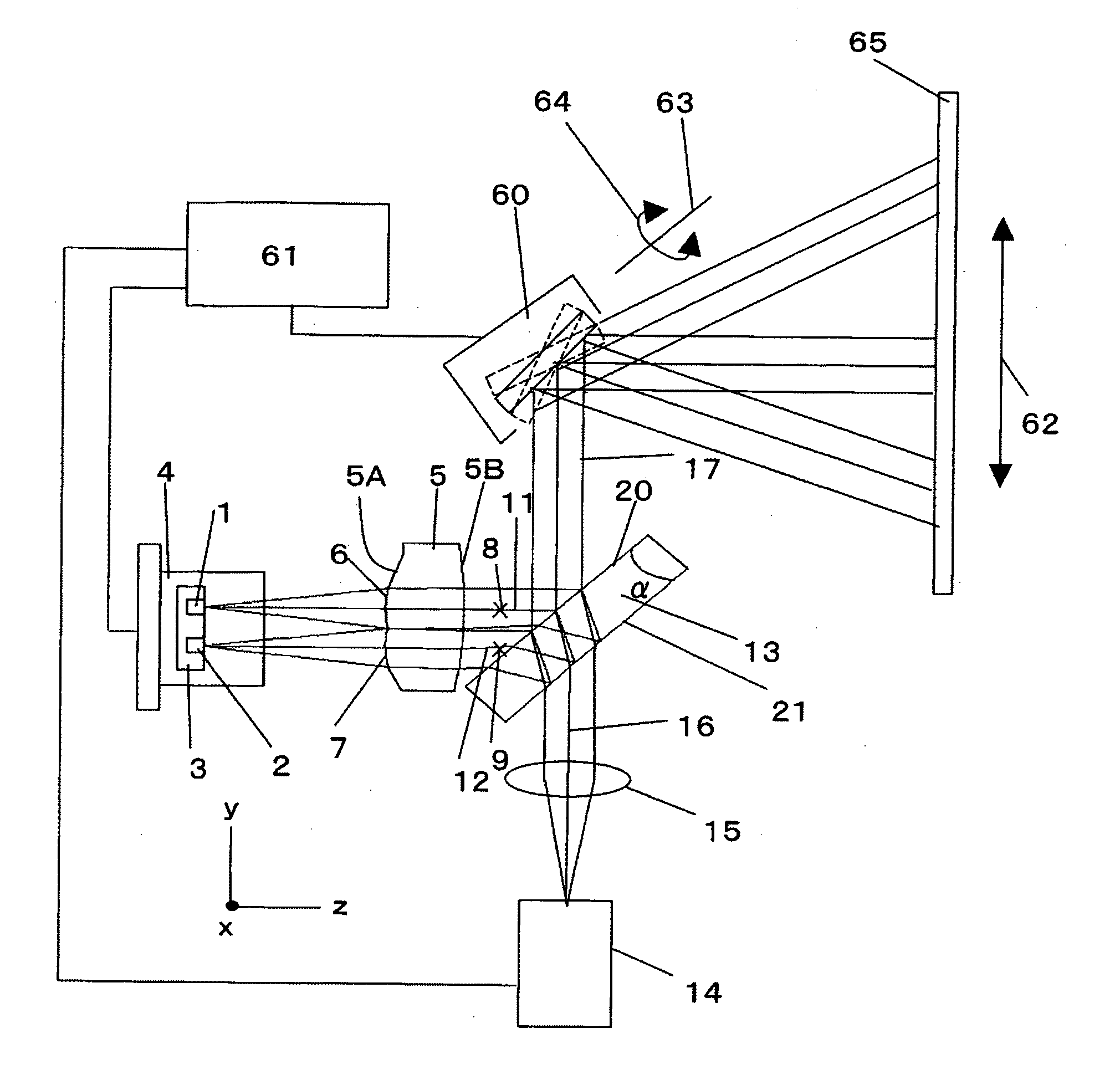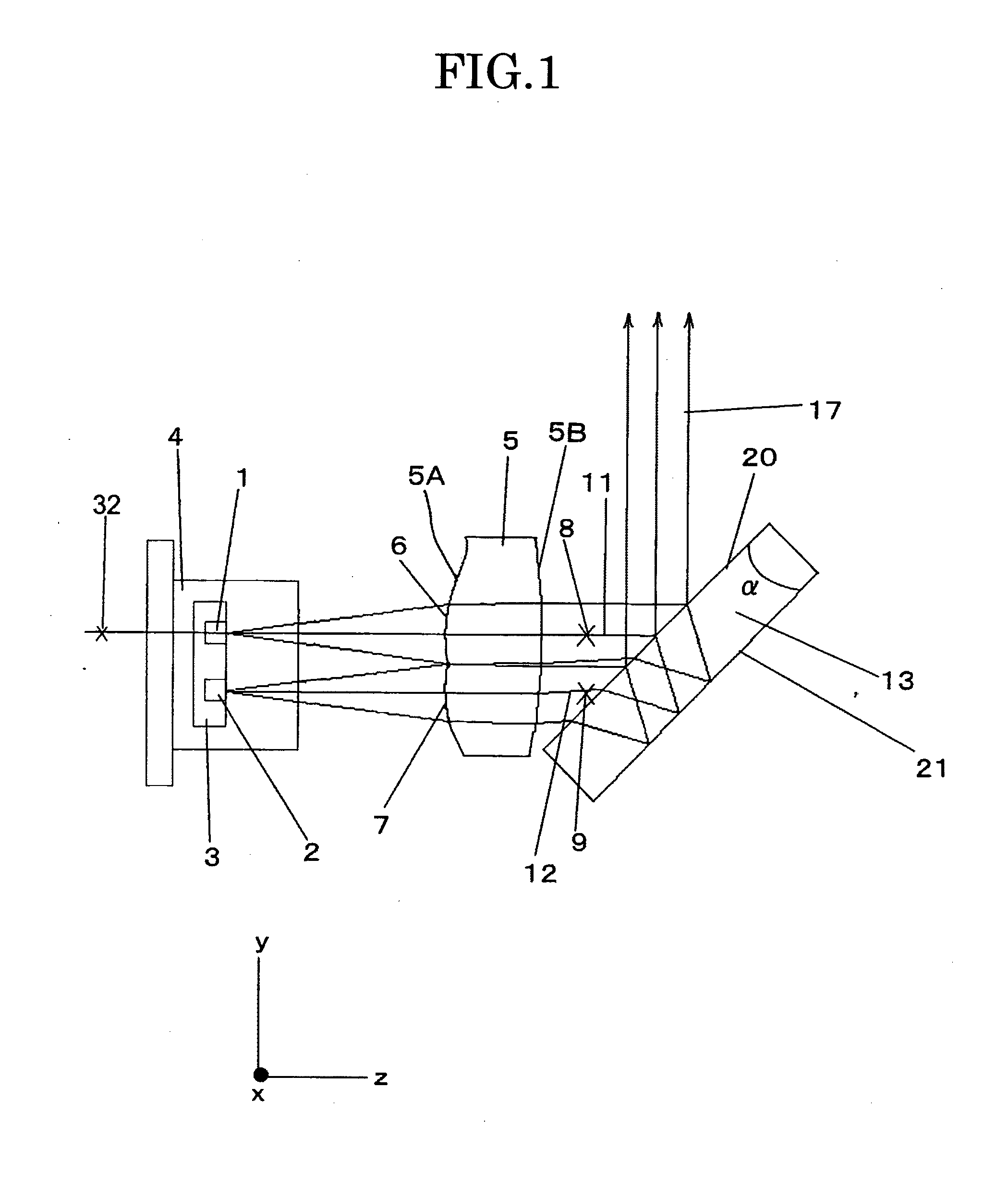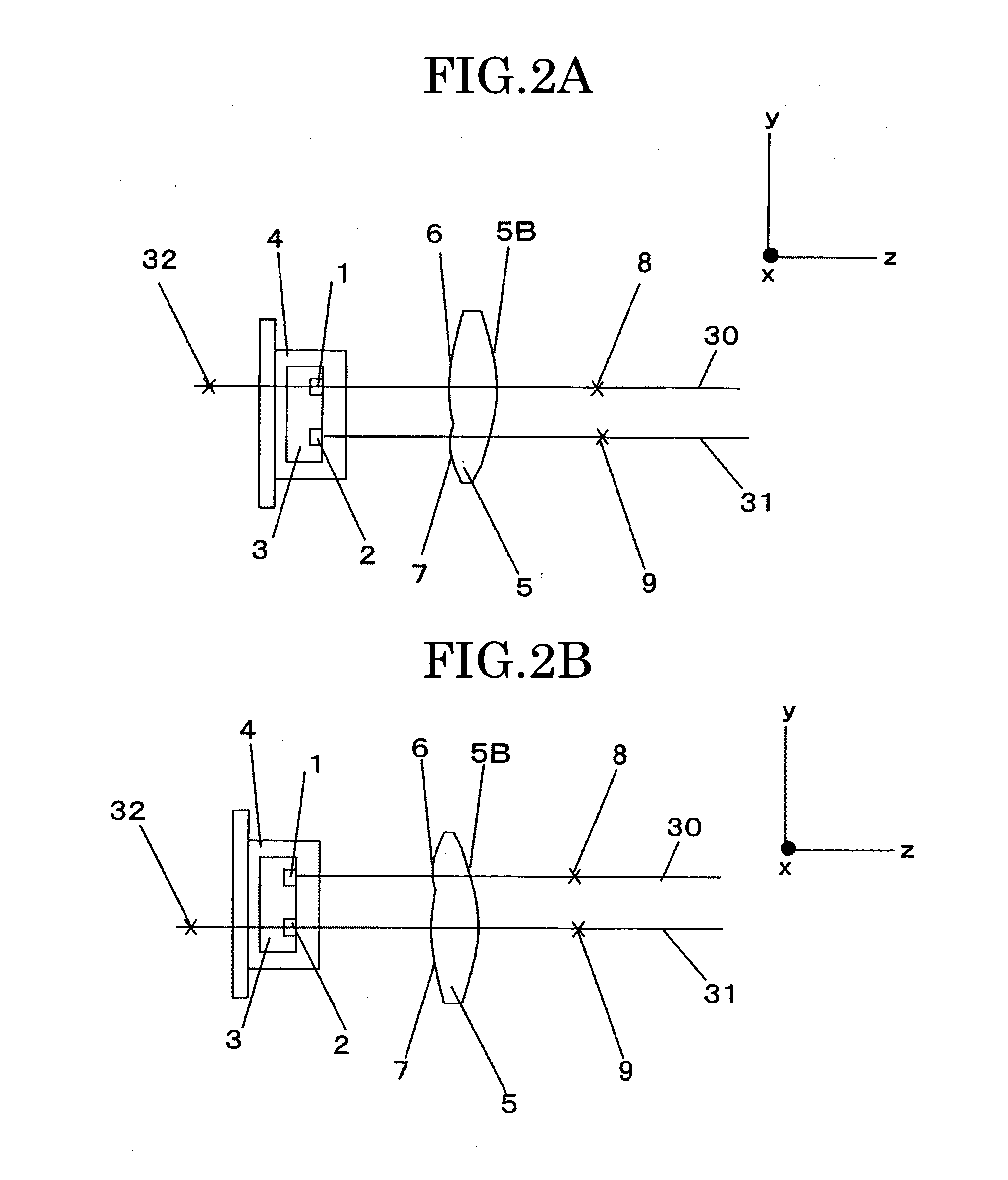Coupling lens, illuminating device, and electronic device
a technology of illuminating device and lens, applied in the field of illuminating device, can solve the problems of inability to achieve disadvantage in achieving small size and lightweight device, etc., to achieve the effect of improving light use efficiency, improving wave front quality of light flux, and small device siz
- Summary
- Abstract
- Description
- Claims
- Application Information
AI Technical Summary
Benefits of technology
Problems solved by technology
Method used
Image
Examples
first embodiment
[0043]FIG. 1 shows an illuminating device having a coupling lens according to the present invention. The illuminating device includes a first light source 1 configured to emit first light having a first wavelength λ1, a second light source 2 disposed adjacent to the first light source 1 and configured to emit second light having a second wavelength λ2, and a coupling lens 5 configured to couple the first light with the second light. The first light and the second light are emitted in the substantially same direction. The coupling lens 5 has a first surface 5A facing the first and second light sources 1, 2 and a second surface 5B disposed at an opposite side of the first surface 5A and having a second-surface curvature. The first surface 5A includes a first region 6 through which the first light passes and a second region 7 through which the second light passes. The first region 6 has a first region curvature and the second region 7 has a second region curvature. A position of a firs...
second embodiment
[0070]the present invention will be explained with reference to FIG. 5.
[0071]The light emitted from the light source which has the optical axis passing through positions of the curvature center 32 of the second surface 5B of the CL 5, which is opposite to the first surface 5A, and the curvature center 8 of the first region 6 of the first surface 5A of the CL 5 is reflected on the front surface 20 of the wedge prism 13.
[0072]The light flux reflected on the rear surface 21 of the wedge prism 13 has an astigmatism and the light flux reflected on the front surface 20 of the wedge prism 13 has no aberration in a case where the reflection surface 20 is an ideal planar surface. According to this configuration where the light passing through the opposite surfaces of the CL 5 without being relatively shifted is reflected on the front surface 20 of the wedge prism 13, good optical properties can be achieved.
[0073]On the other hand, the second surface 5B of the CL 5, which is opposite to the f...
third embodiment
[0075]the present invention will be explained with reference to FIG. 6.
[0076]The illuminating device according to this embodiment further includes a third light source 14 in addition to the first and second light sources 1, 2 described in the first embodiment (see FIG. 1).
[0077]More specifically, the third light source 14 is disposed so as to emit third light having a third wavelength in a direction which differs from the emitted direction of the first light from the first light source 1 and the second light from the second light source 2. In this embodiment, the third light is emitted in a direction substantially perpendicular to the first and second light. As the third light source 14, a green light source configured to emit the third light having the wavelength in a green color wavelength range of 500 nm to 550 nm may be used. A semiconductor laser is preferably used as the green light source. However, actually there exists no green semiconductor laser, which can be steadily used...
PUM
 Login to View More
Login to View More Abstract
Description
Claims
Application Information
 Login to View More
Login to View More - R&D
- Intellectual Property
- Life Sciences
- Materials
- Tech Scout
- Unparalleled Data Quality
- Higher Quality Content
- 60% Fewer Hallucinations
Browse by: Latest US Patents, China's latest patents, Technical Efficacy Thesaurus, Application Domain, Technology Topic, Popular Technical Reports.
© 2025 PatSnap. All rights reserved.Legal|Privacy policy|Modern Slavery Act Transparency Statement|Sitemap|About US| Contact US: help@patsnap.com



